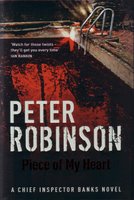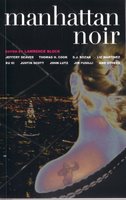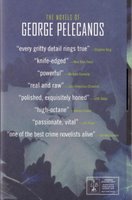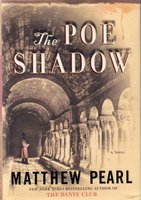The 2006 National Book Festival, organized and sponsored by the Library of Congress and hosted by Mrs. Laura Bush, will befrom 10 a.m. to 5 p.m. on Saturday, Sept. 30, on the National Mall in Washington, D.C., between 7th and 14th streets (rain or shine). The festival is free and open to the public.
“Each year, tens of thousands book lovers attend this national event to meet their favorite authors and celebrate lifelong literacy, which we are also highlighting in a partnership with the Ad Council” said Librarian of Congress James H. Billington. “Now in its sixth year, the National Book Festival presents a wonderful opportunity to see firsthand how reading changes lives and how our country, its citizens and its libraries promote reading in imaginative and inspiring ways."
“The National Book Festival is a great way for families and friends to share in the joys of reading and discover the works of some of America’s most-loved authors,” Mrs. Bush said. “Readers of all ages can listen to and meet their favorite writers and enjoy a day on the National Mall.”
At the 2006 National Book Festival, more than 70 well-known authors, illustrators and poets will discuss their work in various pavilions, including “Children,” “Teens & Children,” “Fiction & Fantasy,” “Mysteries & Thrillers,” “History & Biography,” “Home & Family” and “Poetry.”
Festival goers can have books signed by their favorite authors, and children can meet ever-popular storybook and television characters, such as Arthur The Aardvark, Maya and Clifford the Big Red Dog, who will appear on the festival grounds throughout the day.
Participating authors include best-selling novelists Khaled Hosseini, author of the “Kite Runner” and Geraldine Brooks, winner of the 2006 Pulitzer Prize for her book “March”; novelist and essayist Joan Didion; historians John Hope Franklin and Doris Kearns Goodwin; biographer Taylor Branch (“Martin Luther King”); Kai Bird and Martin Sherwin, winners of the 2006 Pulitzer Prize for their biography of J. Robert Oppenheimer; authors of books for children and teens, including Andrew Clements, Stephenie Meyer, Richard Peck, and Louis Sachar; award-winning illustrators Bryan Collier, Betsy Lewin and Mark Teague; Donald Hall, the recently named 14th Poet Laureate of the United States; and poet Dana Gioia, the director the National Endowment for the Arts; best-selling mystery and thriller authors, including Michael Connelly, Lisa Scottoline, Kathy Reichs and Alexander McCall Smith; science fiction award-winner Spider Robinson; and Elmer Kelton, author of more than 40 novels and voted “the best Western author of all time” by the Western Writers of America.
Popular personalities in the “Home & Family” pavilion include television celebrity chefs and authors G. Garvin and Marcus Samuelsson; CNBC economics and investments commentator Jim Cramer and popular linguistics expert Deborah Tannen, whose new best-seller is titled “You’re Wearing That? Understanding Mothers and Daughters in Conversation.”
Beyond meeting their favorite authors, festival visitors will have the opportunity to learn about the reading programs and resources in libraries across the country. The “Pavilion of the States” will highlight the book, reading, literacy and library promotion activities of all 50 states, the District of Columbia and several American trusts and territories. Representatives from every state and territory will welcome families and children interested in that state's writers and reading programs. In addition, the “Let’s Read America” pavilion will feature reading promotion activities developed by select festival sponsors.
The Library of Congress Pavilion will feature a variety of interactive family-centered activities about the importance of lifelong literacy, cultural preservation, and preserving digital culture. Computers will be available for children and adults to explore the Library’s acclaimed Web site at
www.loc.gov.
The Library’s myriad online resources contain examples of American creativity in all forms such as music, poetry, films, photographs, maps, and sound recordings. The Library’s new National Audiovisual Conservation Center will introduce the latest technologies in film and audio preservation.
The Veterans History Project will also feature a teacher and her students who use VHP material in the classroom. Two students will interview Ezra Hill, a Tuskegee Airman. VHP historian Tom Weiner will interview Darlene Iskra, the first woman to command a ship in the U.S. Navy and serve during the Persian Gulf War.
In the “Teens and Children” pavilion, the national student winners of the Letters About Literature contest will read their personal letters to authors who inspired them. Sponsored by the Library’s Center for the Book with support from distinguished benefactor Target, Letters About Literature invites young readers in grades 4-12 to write personal letters to authors, past or present, who have changed their views of the world or of themselves. Each year, winners are selected at the state and national levels. As the project’s corporate sponsor, Target awards the six national winners and their parents with a trip to the National Book Festival in Washington, to share their winning letters with a national audience.
“It is inspiring to see the number of young people whose lives have been positively affected by a particular author or book,” said Laysha Ward, vice president, community relations, Target. “Through its comprehensive support of early childhood reading, including the Letters About Literature program and the National Book Festival, Target is helping to instill a love of reading in kids as the foundation for lifelong learning.”
In addition to planning a range of activities for this year’s festival on the National Mall, the Library is offering a variety of ways for people around the country to participate in the event online. New this year will be downloadable podcasts of interviews with popular participating authors. The Library will also present same-day webcasts of selected authors’ presentations from the “Teens & Children,” “Mysteries & Thrillers” and “Fiction & Fantasy” pavilions. Both the webcasts and the podcasts will be available on the Library’s Web site at
www.loc.gov/bookfest.
During the week leading up to the festival, washingtonpost.com will host a series of online chats with authors appearing at the National Book Festival. These text-based discussions can be viewed daily, starting on Monday, Sept. 25, on the site at
www.washingtonpost.com. The schedule of chats and authors’ names will be posted on the site and the Library’s site at
www.loc.gov/bookfest. Participants can submit questions in advance or during the live discussion. Authors’ responses will post while the program is airing or at a later date on
washingtonpost.com’s online discussion archive.
In addition to live webcasts, the Library will again collaborate with Book TV on C-SPAN2 to televise the National Book Festival “History & Biography” pavilion events live on Sept. 30. The C-SPAN2 Book TV Bus, a mobile Book TV studio with a multimedia demonstration center for the public, will also be on the National Mall. Festival coverage will be streamed live on C-SPAN’s website
www.booktv.org.
The artist for this year’s festival is award-winning Russian illustrator Gennady Spirin, whose lush contemporary technique brings a rich, imaginative depiction to the 2006 National Book Festival poster. Spirin combines a modern aesthetic with the great traditions of the Renaissance. He has illustrated 30 storybooks for children and has won four gold medals from the Society of Illustrators. Four of his books, including “The Sea King’s Daughter” (1997), were named the best illustrated book of the year by The New York Times. Posters featuring the illustration painting will be available free of charge at the festival.
The 2006 National Book Festival is made possible with generous support from Distinguished Benefactor Target; Charter Sponsors AT&T, The Amend Group and The Washington Post; Patrons AARP, the James Madison Council and the National Endowment for the Arts; and a myriad of contributors. The Junior League of Washington will again contribute hundreds of volunteers to help with the National Book Festival.
A preliminary list of participating authors, illustrators and poets follows. For more information about them and the festival, visit
www.loc.gov/bookfest.
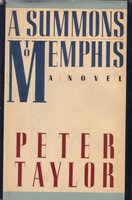 71. A Summons to
71. A Summons to  72. A Death In Belmont, Sebastian Junger. Non-Fiction, 7-28, p. 260
72. A Death In Belmont, Sebastian Junger. Non-Fiction, 7-28, p. 260


